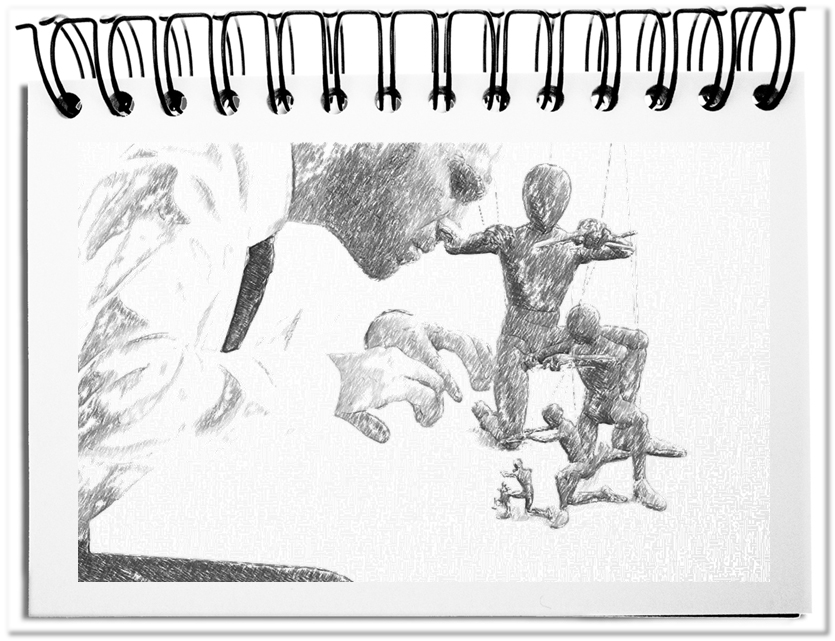The chances of the Internet make everyone a possible vendor of products and services. It leads to confusing offers and a lack of demand in your outcomes. Therefore, you fight with all means for awareness. To stand out from the flood of competitors, legions of advisers offer help regarding Social Media, SEO, Chat Bots, Affiliate, Influencer and Online Marketing, and more. They promise a growing sales funnel and thus make more revenue. However, all these means are void as long as their vie for leads drive the sending offers at any cost as well as the SEO design does not create anything but ongoing work, charges, and the loss of self-confidence in your deliverables.
Too many PR efforts create a blind spot that even the best promotional efforts cannot address – the inadequate design of your deliverables.
- Focus on the wrong thing – better sharpen the product range
There is no question that promotion has a significant impact on sales. However, Henry Ford already knew: You cannot build up a reputation on what you are going to do. In our fast-paced times, entrepreneurs seem to put the cart before the horse. They design mesmerizing promotions for an offer that is stuck in the providers’ minds. Coming up with the slogan consumes time and energy – remember, without having a presentable deliverable. At the same time, customers pay for your offer – be aware, they are not willing to pay more for something due to the effort required for sales promotion.
For this reason: Before you get bogged down in advertising, make your products and services sellable – the baker first makes the rolls before praising them. - Distraction through SEO – better conduct personal customer conversations
The real purpose of advertising is to increase sales – not to attract additional visitors to your website. The presumption that the clever design of the website and especially the keywords will generate further business through the increased number of visitors is more wish than reality. A car repair shop with limited parking spaces and a fixed number of employees cannot process more vehicles at will. Therefore it does not need more traffic on the website, but rather more interaction with its regular customers. In contrast, an advisory office can better adapt to a growing number of orders. Through clever marketing, it taps into and ultimately serves new customer groups and a more extensive scope. However, it is futile to advertise as long as the deliverables are not prepared coherently. SEO is a one-way street that does not provide new insights. Only through the mutual exchange with your customers, you learn where and how you can become better.
For this reason: Save SEO time and money and instead involve the customers in the further development of your deliverables – you discover your weaknesses and can offer at the same time additional and higher-quality outcomes. - Tough in presentation, banal in matter
According to Microsoft, the attention span of Internet users is eight seconds – then they move on to the next page. However, this duration says nothing about whether a link was clicked by chance or people searched for exactly your content. You should be aware that you only read this bullet point up to here and only understand it 70-80%. Potential buyers skim the content for their keywords. If they do not find what they are looking for or are distracted by something else, they move on and are gone. However, if you catch their attention, they start reading carefully. After all, they want to make an investment – the more it costs, the longer they are ready to read the enticing explanations that clarify your skills. The superficial appearance of most web pages arouses doubts in readers – all show and no substance. By describing your deliverables too shallowly, you have missed the chance to win a customer who is already with you. Stick to the old design rule Form follows Function – sharpen your ax before you chop wood.
For this reason: No one judges a car only by its body – make sure that all the components of your offering fit together and perform as expected.
Bottom line: Understandably, you struggle to create an attractive external image – especially if you are not working to capacity. However, the problem is rarely a weak web presence. Convincing websites are available off the shelf. A few clicks and the company colors and logo are incorporated. The good news is that these standards make it easy for customers to navigate your offerings. If you are using the same headlines repeatedly (e.g., Better – Faster – Farther – Cheaper), you are not setting yourself apart from your competitors. The difference that makes the difference is a description of your unique capabilities. If this view on the tip of the iceberg of your achievements is then based on appropriately prepared procedures, the moment has come to apply skillfully. In this case, Henry Ford’s insight counts: Half the money I spend on advertising is waste, and the problem is I do not know which half. However, get into the blind spot of your sales promotion first – the products and services. That is what your customers are ready to pay for.


